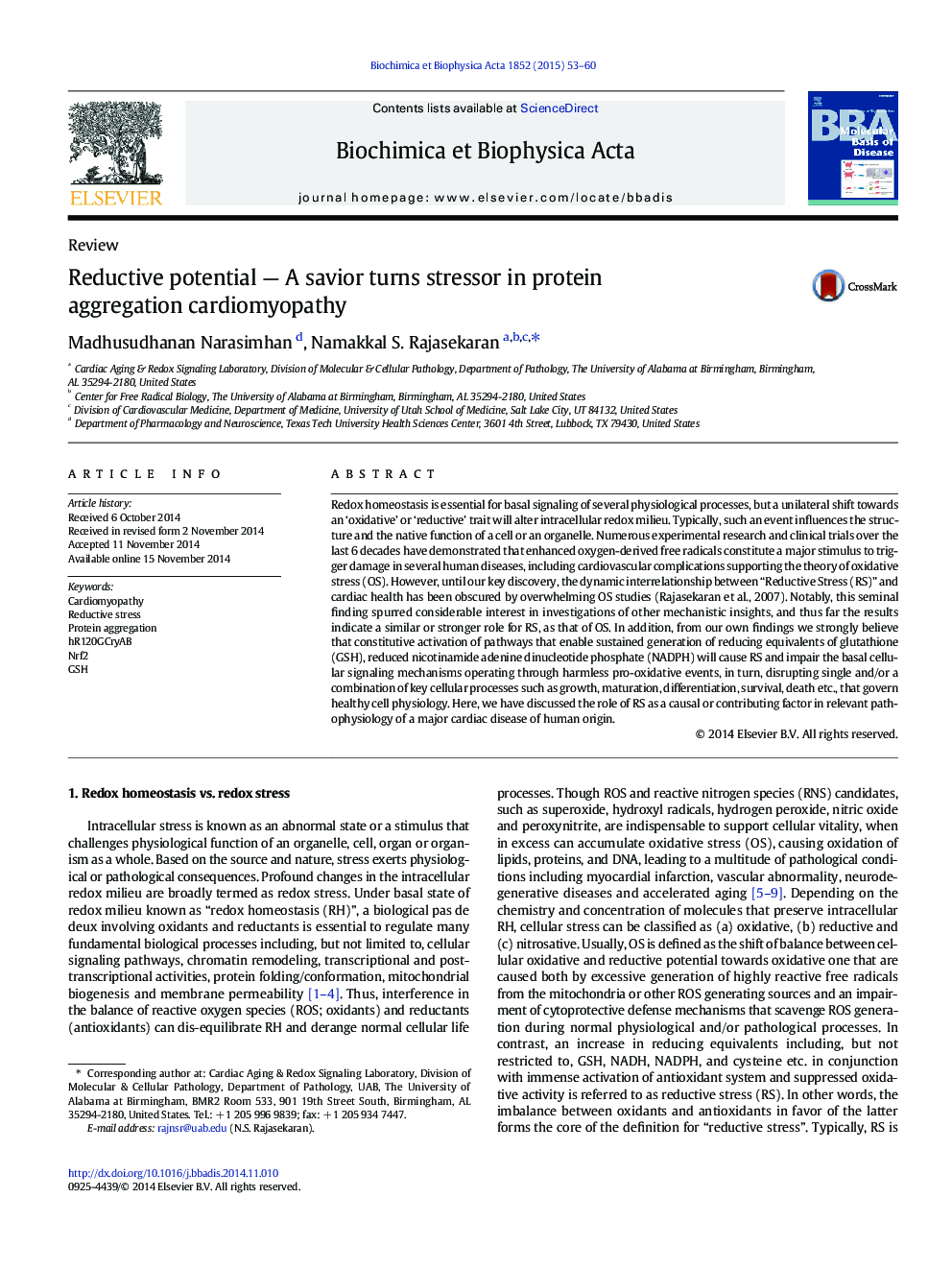| کد مقاله | کد نشریه | سال انتشار | مقاله انگلیسی | نسخه تمام متن |
|---|---|---|---|---|
| 1904670 | 1534651 | 2015 | 8 صفحه PDF | دانلود رایگان |
• A role for “reductive stress” in cardiac pathophysiology is explained.
• Mutant protein expression and aggregation is associated with “reductive stress”.
• Sustained activation of Nrf2 signaling might be a causal mechanism for “reductive stress”.
• Reductive stress is under-represented phenomena which should be explored in detail.
Redox homeostasis is essential for basal signaling of several physiological processes, but a unilateral shift towards an ‘oxidative’ or ‘reductive’ trait will alter intracellular redox milieu. Typically, such an event influences the structure and the native function of a cell or an organelle. Numerous experimental research and clinical trials over the last 6 decades have demonstrated that enhanced oxygen-derived free radicals constitute a major stimulus to trigger damage in several human diseases, including cardiovascular complications supporting the theory of oxidative stress (OS). However, until our key discovery, the dynamic interrelationship between “Reductive Stress (RS)” and cardiac health has been obscured by overwhelming OS studies (Rajasekaran et al., 2007). Notably, this seminal finding spurred considerable interest in investigations of other mechanistic insights, and thus far the results indicate a similar or stronger role for RS, as that of OS. In addition, from our own findings we strongly believe that constitutive activation of pathways that enable sustained generation of reducing equivalents of glutathione (GSH), reduced nicotinamide adenine dinucleotide phosphate (NADPH) will cause RS and impair the basal cellular signaling mechanisms operating through harmless pro-oxidative events, in turn, disrupting single and/or a combination of key cellular processes such as growth, maturation, differentiation, survival, death etc., that govern healthy cell physiology. Here, we have discussed the role of RS as a causal or contributing factor in relevant pathophysiology of a major cardiac disease of human origin.
Journal: Biochimica et Biophysica Acta (BBA) - Molecular Basis of Disease - Volume 1852, Issue 1, January 2015, Pages 53–60
